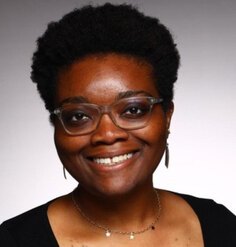5 Questions with Steven Spears
December 16, 2014
Steven Spears, ASLA, PLA, AICP is a principal and partner with Design Workshop in Austin, Texas. With 15 years of professional experience, he has designed significant projects in the realm of parks and plazas, streets and corridors, trails and greenways, campuses, resorts, communities, and residential gardens. He is a national leader in performance-based design.
What are you drawing inspiration from right now?
My current projects are the source of great inspiration, particularly those that focus on the delicate balance between humanity and ecology. My focus is primarily in inner-city areas where natural landscapes are being pressured toward exhaustion by human activities, resulting in urban green infrastructure projects. I am constantly faced with the questions of what are the limits and how can humanity and ecology coexist.
I have always felt a connection back to my Midwestern roots — spiritually, emotionally and in my project research. Lately, I have developed a renewed infatuation with Jens Jensen, who during the nationalist movement shifted our focus away from European models of landscape design, which were in vogue at the time, to valuing the natural “Prairie Style” landscapes of the American Midwest. Design Workshop’s Houston Arboretum and Nature Center (HANC) project, which we are partnering on with Reed Hilderbrand, involves the reestablishment of native prairie and savannah landscapes so I am having my team read Jensen’s Siftings as well as Jens Jensen: Maker of Natural Parks and Gardens (Creating the North American Landscape) by University of Michigan School of Natural Resources faculty member, Bob Grese. I also just saw the fantastic new documentary about Jensen, The Living Green. I am blessed to have this great connection with the Midwest landscape, much like Jensen.
I am fortunate to have grown up in the Midwest, my house across the street from a cornfield, camping with my family, exposed to all forms of nature. The region of my childhood and the constant exposure to nature defines who I am and why I am the person I am today. Now that I am a parent, I am rereading Richard Louv’s Last Child in the Woods and thinking about how my projects can facilitate people’s reconnection to nature. We are restoring the prairie at HANC so that children who haven’t yet been born will experience the beauty of natural landscapes and learn that getting dirt under their fingernails is encouraged!
What potential for sustainability most excites you on one of your current projects?
I am incredibly excited about the ASLA Chinatown Green Street project, which our firm won through a national call this spring. The fact that this project is being championed by our national professional organization and is located in the downtown of our nation’s capital puts significant pressure on it to achieve the highest levels of sustainability and to serve as a model for streets and streetscapes all over the country. Washington, D.C. has made initial steps toward sustainability, mostly through stormwater, due to requirements from the Environmental Protection Agency and issues of combined sewer overflows.
We are trying to use the site and political frame of the location to make serious progress in sustainability within the local D.C. government and to expand beyond the exclusively stormwater lens. We are creating an “ASLA method,” setting the agenda for the project through environmental, social, economic and aesthetic lenses, and establishing measurable goals so that performance can be evaluated. We are using SITES and Greenroads certification targets to meet or exceed the city’s Sustainable DC Plan and to advance the discussion in areas such as stormwater management, lighting and energy use, urban forestry practices, shade provision, urban wildlife, and urban heat island reduction.
This project involves just a touch of politics! But this is something landscape architects must embrace to demonstrate our value to policymakers at the city and national levels. This streetscape will be an international demonstration project of comprehensive sustainability validated by multiple highly-respected programs and agencies. I am proud to be an ASLA member and supporting our national organization with this endeavor.
What do you need to know, but you don’t know right now?
Design Workshop’s Legacy Design approach looks at design opportunities and outcomes in four key areas — environment, community, economics, and art — to achieve sustainable places. The more and more I get my head into the art side of what we do, the more I realize there is incredible opportunity for landscape architects to advance thinking on designing with the human senses in mind.
Scientists are confirming direct links from the senses to memory. There is so much to discover about the connection between human senses and how people use space, form memories of a space, and choose whether to return to a space or not based on memories of comfort/discomfort. Human sensory design is a key component of the design process and I am keenly interested in this and want to know more. How can designers use the human senses and their relation to memory in a provocative way? More importantly, how can this be measured so that it becomes the research avenue of a design process?
What advice would you give to emerging leaders in the profession?
Landscape architects have an opportunity to positively or negatively impact a profound number of people, most of whom they will never meet. This comes with enormous responsibility and should not be taken lightly. The work we do is for others; we need to be extremely selfless to make extraordinary projects happen on their behalf. Design isn’t about you, it’s about someone else.
But that isn’t what we learn in most design schools wherein very competitive environments we are absolutely focused on our individual ideas. Emerging leaders need to be sure they have turned away those habits from school and checked their egos at the door. Put yourself out there and give all you can for a community that you will never truly know or live in or be connected to beyond the project.
Intuitive based design is fading away. When research, measurement of performance and science are coupled with excellence in form-giving composition, rich designed environments emerge. By doing this, it forces the design process to yield to the larger context, thereby allowing intuitive or individual preferences of a designer to not necessarily be the driver of decisions.
What challenge would you give to emerging leaders in the profession?
I charge emerging leaders to be advocates for change — in their firms, in their communities, at the state and national level. Step out of your comfort zone of being a consultant or scholar, and play an active role in your community. Think more broadly about who you are and how you can be impactful. You are rich with knowledge. Landscape architects have often been called stewards of the environment. Broaden that mandate and become good stewards of community and society as well, not just in your professional role, but as a citizen making a difference.
Design Workshop is a landscape architecture, land planning, urban design, and strategic services firm with over four decades of experience. The firm is committed to creating provocative places that meet today’s needs and that are sustainable environments for all time. To do so they practice a methodology called DW Legacy Design®, a proprietary process that seeks to imbue every project with a balance between environmental sensitivity, community connections, artistic beauty, and economic viability. Projects that achieve this harmony are enduring places that make a difference for clients, society and the well-being of the planet and leave a legacy for future generations.
Any opinions expressed in this interview belong solely to the author. Their inclusion in this article does not reflect endorsement by LAF.











